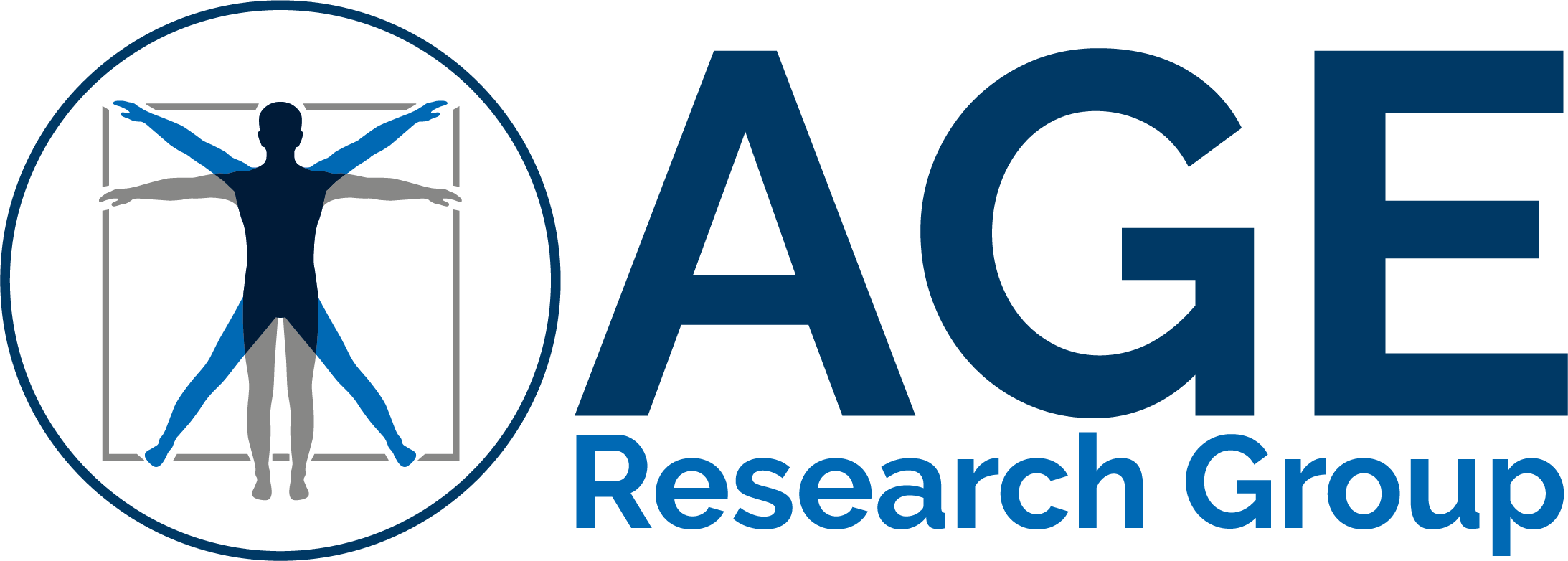News
Muscles matter: raising awareness of sarcopenia through PPIE
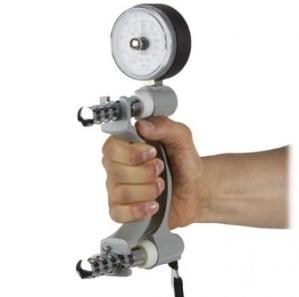
Within the Ageing, Sarcopenia and Multimorbidity (ASM) Research theme of the NIHR Newcastle Biomedical Research Centre, one of our key areas of focus is sarcopenia; the age-related loss of muscle mass and strength. This is a very common condition, yet it is not widely recognised which can lead to delays in diagnosis and intervention. Addressing this issue by raising awareness of sarcopenia is therefore a priority within our research theme.
One of the ways that sarcopenia is detected is via the measurement of grip strength, commonly done using a device called a dynamometer. The person undertaking the test is asked to squeeze the dynamometer as hard as possible to measure the force generated by the muscles in their hand and forearm. By comparing measurements of grip strength against published norms, we are able to identify those people who have relatively low muscle strength and are likely to benefit from a resistance exercise intervention.
Alongside its use in research studies and clinical practice, measuring grip strength has also proved to be an excellent way to engage members of the public in our work on sarcopenia. At the recent NIHR Newcastle BRC Celebration of Excellence: Community event delegates had the opportunity to have their grip strength measured as part of an interactive demonstration.
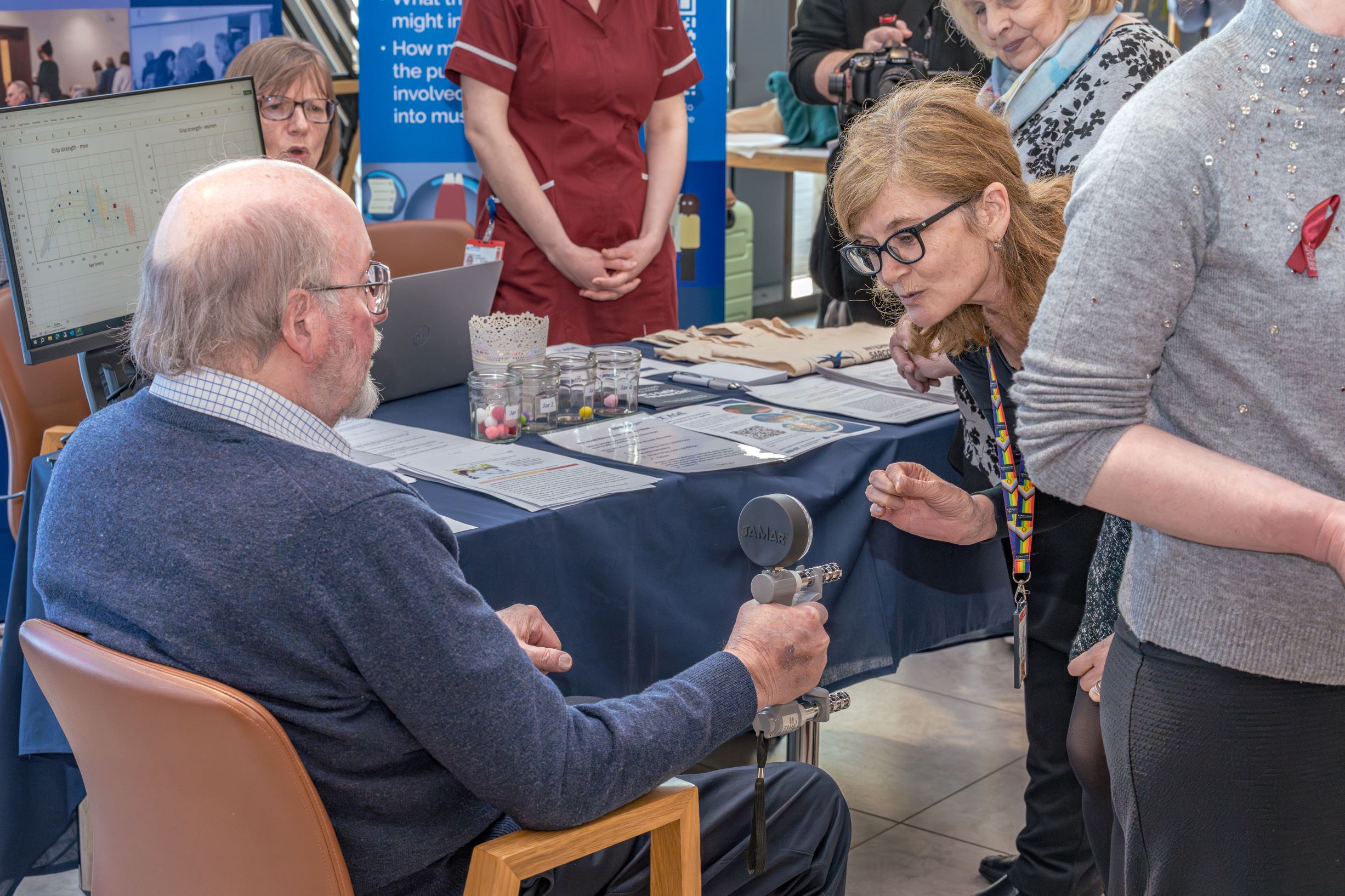
Over 60 delegates took part and were able to see how their grip strength compared to people of a similar age, both in the general population and in other delegates. The graphs below (Figure 1) illustrate the results; the blue dots represent the delegates who had their grip strength measured at the event, and their measures are compared against published norms.
These results show that the grip strength of most of our delegates fell within the typical ranges for their age and sex. This prompted lots of interesting discussions between the research team and members of the local community and provided a great opportunity to raise awareness of sarcopenia and the ways it can be prevented and treated.
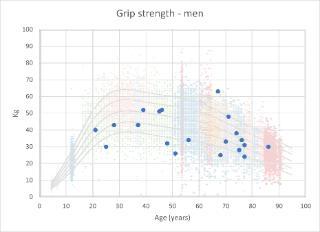
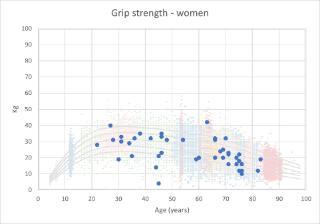
Figure 1: Grip strength of males and females recorded at the recent NIHR Newcastle BRC Celebration of Excellence: Community event compared against published norms. The vertical Y axis refers to the delegates’ strength in kilograms and the horizontal X axis represents age in years.
Providing members of the public with the opportunity to have their grip strength measured and speak to our team about the importance of sarcopenia is one of several ways that we raise awareness of sarcopenia and highlight its impacts.
Other examples include:
- our work to highlight the lived experience of age-related decline in muscle function which was included in a Nature Reviews Disease Primers article on sarcopenia.
- an animated video created in partnership with public partners living with muscle weakness to increase public awareness and understanding of research into muscle ageing.
- engaging with mass media, including an article in Marie Claire magazine and a podcast.
Through our thriving programme of engagement and involvement opportunities, the public can continue to learn, share their lived experiences and take part in research on ageing, sarcopenia and multiple long-term conditions.
Last modified: Fri, 13 Jun 2025 09:55:36 BST

